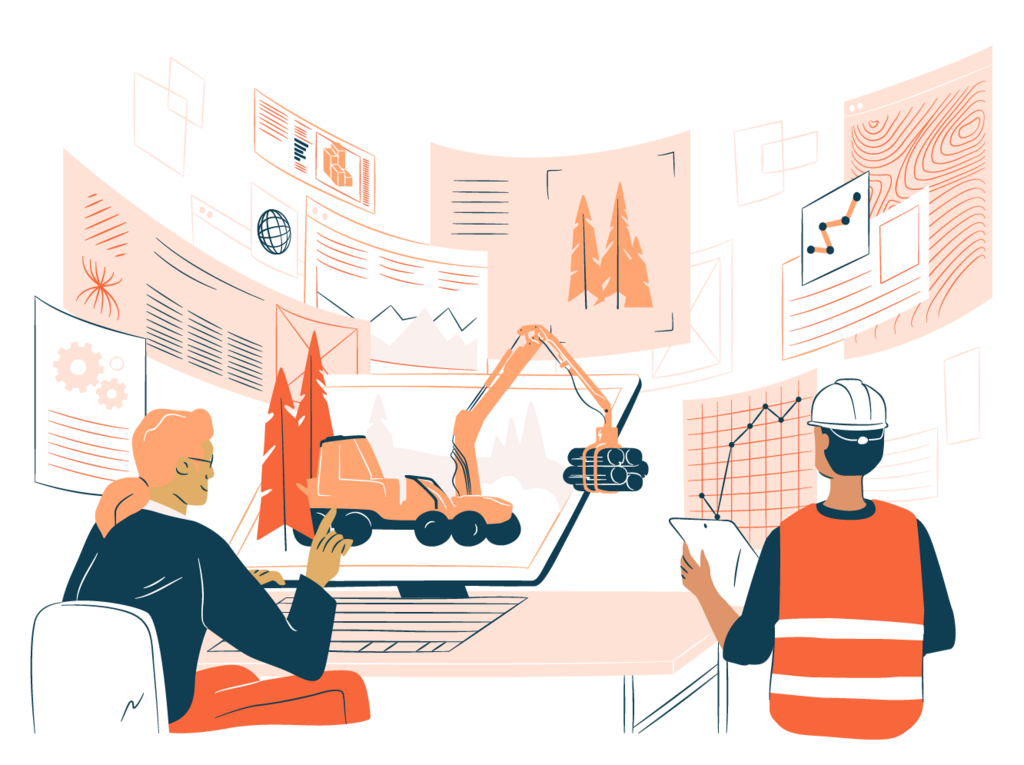The Service Design Network’s Finnish Chapter just celebrated its 10th anniversary. It was an interesting opportunity for me to hear about their history, meet people and witness the warm atmosphere where fellow designers met each other after a long time. I had a small keynote speech and since it felt like I had so much more to say than what 10 minutes allowed, I decided to write a blog afterwards.
Ethics X Sustainability
We at Gofore talk about ethics. In practice, people wonder what ethics has to do with sustainability. Well, in fact a lot. Ethics is the whole basis for sustainable actions, it helps us to make responsible decisions and when in balance with our values and different norms or goals, ethics can lead to sustainability. Although within sustainability, majority of the requirements we face come from the legislation and beyond that from the opinion of our stakeholders, customers, co-operatives, the value chain operators, maybe also investors or shareholders. But today the demand for sustainability begins to rise also within the organisations, even from employees. Therefore, it is important to talk about ethics.
What do we stand for, what kind of operations we support and why? What are the ethical foundations that we build upon? It is not an easy path, but it will result to more developed understanding of what we value as a community and what we drive for. It is about daring to question the unquestionable. If one does not act now, risk for increasing cost of adapting to new changes in the operating environment will materialise in the future. It’s about building resilience!
Design X Sustainability
Similar to sustainability, discussion about ethics is a continuous task. We will never be ready. In sustainability we have huge number of different terms, the acronym “jungle”, many kinds of standards and all the time changing and evolving sustainability frameworks. They are important, but sometimes it feels that we are tied into the “mystery” of sustainability as a theme, and it hinders us from focusing on the development and taking steps to the right direction.
Sustainability as a concept challenges us all. I think this is where design as a capability is needed. As a former sustainability consultant, it is interesting to see a lot of similarity in moving from environmental protection to CSR and ESG and how sustainability capability has evolved as a corporate function as well as how much the range of different kind of sustainability related educational programs has grown. Similar changes are happening also in design. That is why I say: Sustainability is for all. There will still be need for substance expertise, so called “hard core” sustainability experts, but we need more presence for the designers in the early phase of any design where there is a chance to make the biggest impact.
Designers have the capability to leverage the change for sustainability transformation. Raising the difficult questions will help an organisation to build its resilience towards different global and societal sustainability challenges (and crisis). Design can help in steering the discussion and creating understanding – which is in fact sometimes the most challenging thing to achieve in any organisation. From a human perspective.
The ”silent stakeholder”
Making the environment (or nature) as one of your stakeholders is the key. The challenge is that this stakeholder is “silent”. The effects of climate change for example are realised slowly. In the future, will there be new things like “ecosystem experience, EX”? Not to increase the fundamental crisis a single millennial designer already has; design will not make the sustainability transformation alone. There is need to internalise sustainability in all capabilities and collaborate. Cross-pollinate your thinking with other professionals. That is how you can be part of creating the best new practices in sustainable design.
Digital X Sustainable
And why in particular digital design has the upper hand? We have the power to solve the most wicked problems by bringing to use wide range of new technology and practices to use in problems the traditional engineering has not been able to solve. Of course, in ICT at the same time we need to make sure we are not going to go ”out of the frying pan and into the fire”. We need to start designing sustainable as default. Also, digital is not yet regulated the same as physical. But it doesn’t mean this will remain forever. We can accelerate the sustainability transformation – but let’s do it sustainably. Digital can also bring many other good things to the table in terms of sustainability. We have deep understanding of another fundamental change, the digitalisation, and we must utilise that to avoid common pitfalls.
Sustainability should not be only reporting. Let’s discuss more about the opportunities Gofore can bring.



